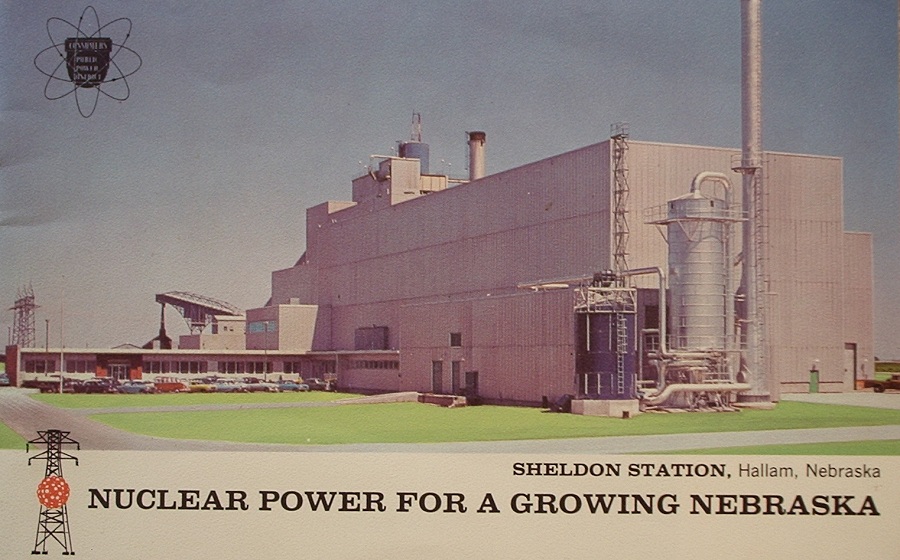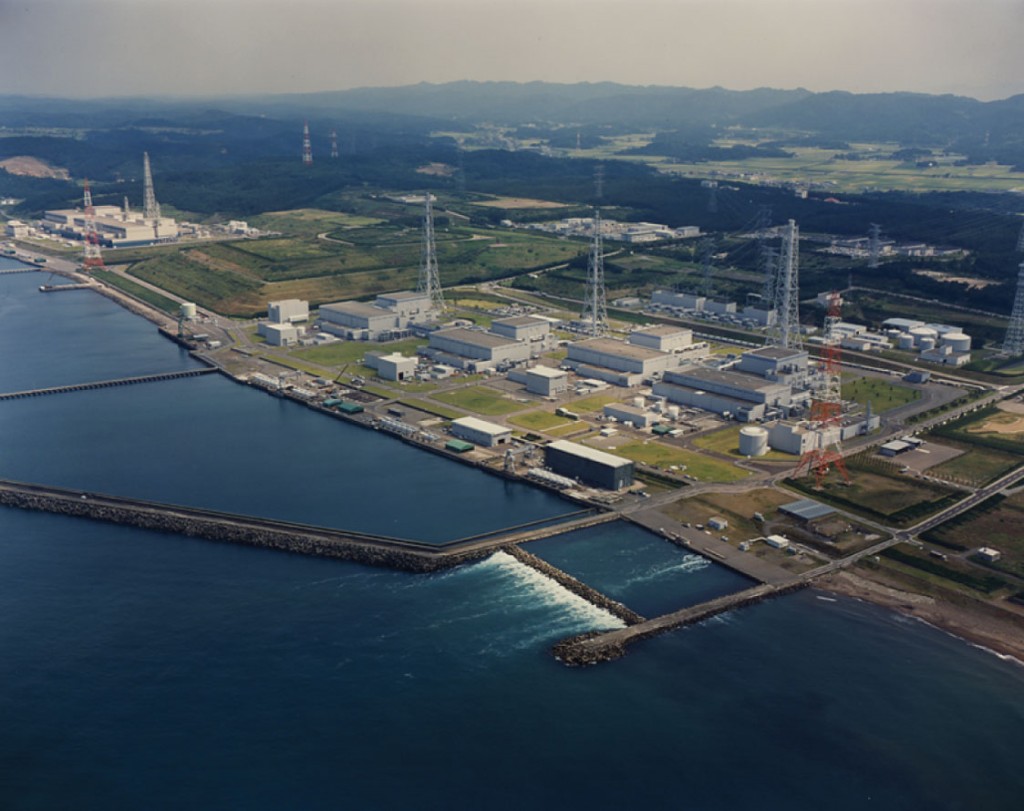Nuclear Matinee: How It's Made—Spent Nuclear Fuel Containers
This excerpt from the Discovery Channel's How It's Made series documents the making of a spent nuclear fuel container.
The ANS Nuclear Cafe is a blog owned and edited by the American Nuclear Society. Information contained on the ANS Nuclear Cafe has been provided by numerous sources. Therefore, the American Nuclear Society assumes no responsibility or liability for the accuracy of information contained herein. DISCLAIMER: The views expressed in posted articles do not necessarily reflect the views of the American Nuclear Society. The views expressed here are those of the individual authors. ANS takes no ownership of their views. The American Nuclear Society assumes no responsibility or liability for any use or operation of any methods, products, instructions, or ideas contained on this site.

A message from Electrical Builders, Ind.
America’s Top Performing Nuclear Plants Rely on Electrical Builders, Industries to Expand and Extend the Life of Their Critical Electrical Assets
This excerpt from the Discovery Channel's How It's Made series documents the making of a spent nuclear fuel container.
Earlier this month, the Oak Ridge Institute for Science and Education (ORISE) published its annual survey on nuclear engineering enrollment and degrees (check out the full report here). The 2013 data shows enrollment and the number of graduates in nuclear engineering programs along with a survey of where students are working after graduation.
Thirty-five years ago this week, a nuclear reactor located on an island in the Susquehanna River near Harrisburg, Pennsylvania, suffered a partial core melt.
 The 201st Nuclear Energy Blogger Carnival has been posted at The Hiroshima Syndrome. You can click here to see the latest installment in a long running tradition among the top English language pro-nuclear bloggers and authors.
The 201st Nuclear Energy Blogger Carnival has been posted at The Hiroshima Syndrome. You can click here to see the latest installment in a long running tradition among the top English language pro-nuclear bloggers and authors.
Don Miley of Idaho National Laboratory leads a highly enjoyable and thought-provoking tour through the images, perceptions, and yes, the reality of 'nuclear' and nuclear energy research through history.

Hallam Nuclear Power Facility; part of Sheldon Station.
In our previous installment we looked at the Atomic Energy Commission (AEC) Five Year Plan for development of commercial nuclear power in the United States. In this final installment, we'll look at two programs that were initiated in the mid-1950s to help launch the era of construction of commercial power reactors-the Civilian Application Program, and the Power Demonstration Reactor Program.
At this site in January, I made the case that there is significant and persistent prejudice against nuclear power among both the public and policymakers. In February, I discussed several approaches to ameliorating nuclear's current and future problems (which are largely due to said prejudice) and the limitations of each approach. This month, I will explore one last possible option: challenging the biased and unfair treatment of nuclear under current policies and regulation-in court.
 The 200th Nuclear Energy Blogger Carnival has been posted at Atomic Power Review. You can click here to see the latest installment in a long running tradition among the top English language pro-nuclear bloggers and authors.
The 200th Nuclear Energy Blogger Carnival has been posted at Atomic Power Review. You can click here to see the latest installment in a long running tradition among the top English language pro-nuclear bloggers and authors.
The world's first Westinghouse AP1000 pressurized water reactor is scheduled to begin operation later this year at the Sanmen Nuclear Power Station in China. Another AP1000 is scheduled to go online later this year at the Haiyang nuclear power plant in China, with two more AP1000 units to be operational at those sites in 2015, and four additional to follow after that.
During the three years since March 11, 2011, the world has had the opportunity to learn a number of challenging but necessary lessons about the commercial use of nuclear energy. Without diminishing the seriousness of the events in any way, Fukushima should also be considered a teachable moment that continues to be open for thought and consideration.

Tokyo Electric Power Company's Kashiwazaki-Kariwa Nuclear Station; Units 6 and 7 were submitted for safety screening in September 2013.
In our collective memory, disturbing images played out on video around the world in the days following the apocalyptic Great Tohoku Earthquake and Tsunami have somewhat receded, even if they haven't lost their impact-images of rushing waters, floating vehicles, buildings and debris, massive (and unstoppable) outbreaks of fire, and implications of lives lost and lives ruined.
 ANS Nuclear Cafe is proud to host the 199th edition of the Nuclear Energy Blogger Carnival - a long standing tradition among the top English-language pro-nuclear bloggers and authors. The top news and views of the week appear in a rotating fashion each week at one of the top pro-nuclear blogs. With that, let's get to the entries from this week.
ANS Nuclear Cafe is proud to host the 199th edition of the Nuclear Energy Blogger Carnival - a long standing tradition among the top English-language pro-nuclear bloggers and authors. The top news and views of the week appear in a rotating fashion each week at one of the top pro-nuclear blogs. With that, let's get to the entries from this week.
"It is time to make the case for science," says host Neil deGrasse Tyson of the upcoming relaunch of the classic 1980 series Cosmos. The new Cosmos: A Spacetime Odyssey premieres this Sunday, March 9, on FOX, and Monday, March 10, on the National Geographic Network-all in all, in 170 countries and 45 languages, the largest global opening ever for any television series, according to executive producer, writer, and director Ann Druyan.
In August, Entergy announced that it would close Vermont Yankee at the end of this fuel cycle. The plant certainly faced challenging economics.
 The 198th Nuclear Energy Blogger Carnival has been posted at Next Big Future. You can click here to access this latest installment of a long running tradition among the top English language pro-nuclear bloggers and authors.
The 198th Nuclear Energy Blogger Carnival has been posted at Next Big Future. You can click here to access this latest installment of a long running tradition among the top English language pro-nuclear bloggers and authors.
Fans of the popular games Portal and Portal II will get a kick out of this one-or just fans of evil and corrupt artificial intelligences-or just fans of nuclear fission, fusion, and astronomy.
The most informative paragraph in a lengthy article titled Cooling tubes at FPL St. Lucie nuke plant show significant wear published in the Saturday, February 22, 2014, edition of the Tampa Bay Times is buried after the 33rd paragraph:
Dr. J'Tia Taylor is a nuclear engineer at Argonne National Laboratory-and on the cast for the newest season of Survivor, which premiered on February 26 at 8/7c on CBS. J'Tia received her Ph.D. in nuclear engineering from the University of Illinois at Urbana-Champaign and was the first black female to successfully defend and receive a Ph.D. from the department. She now works at Argonne in the area of nuclear nonproliferation policy-learn more about J'Tia's work at Argonne here.